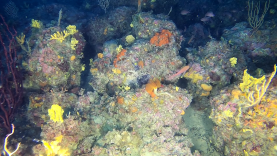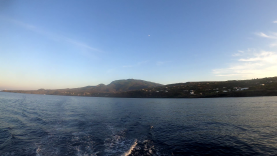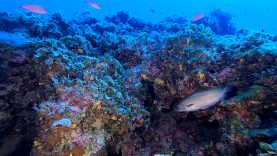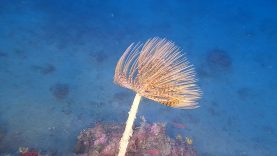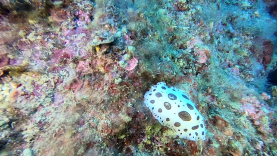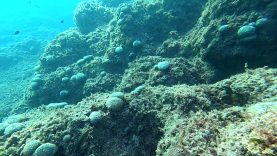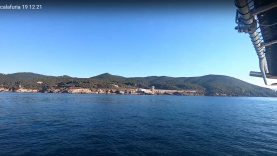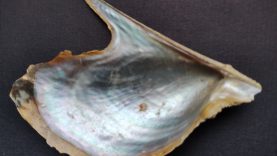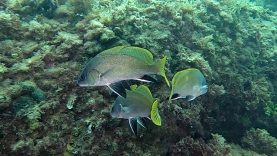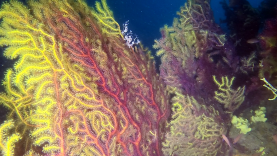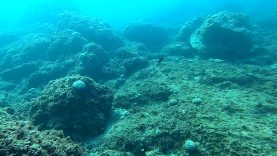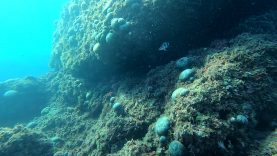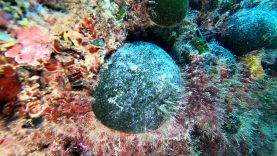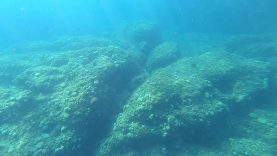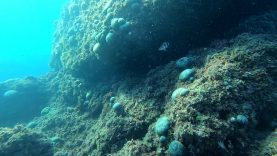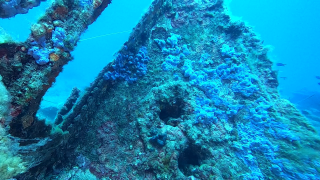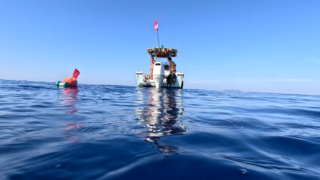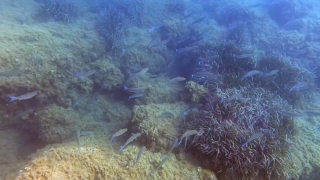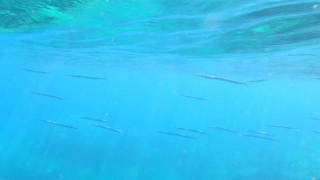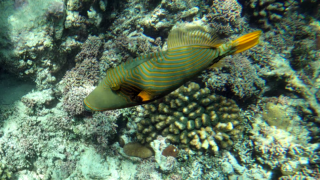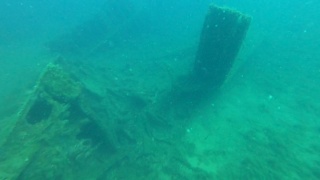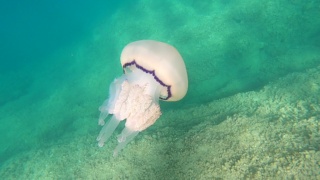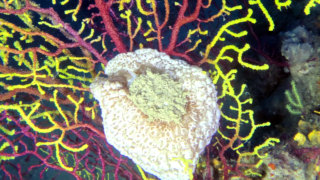Marine green alga - Codium Bursa
We are in winter and in this video we see how the Green ball alga Codium bursa seems to thrive in the first meters of water compared to other species of algae and marine organisms. Despite the external temperature of about 10 ° / 12 °, the water temperature measured by our computer was a pleasant 15 ° / 16 ° even at a depth of about ten meters.
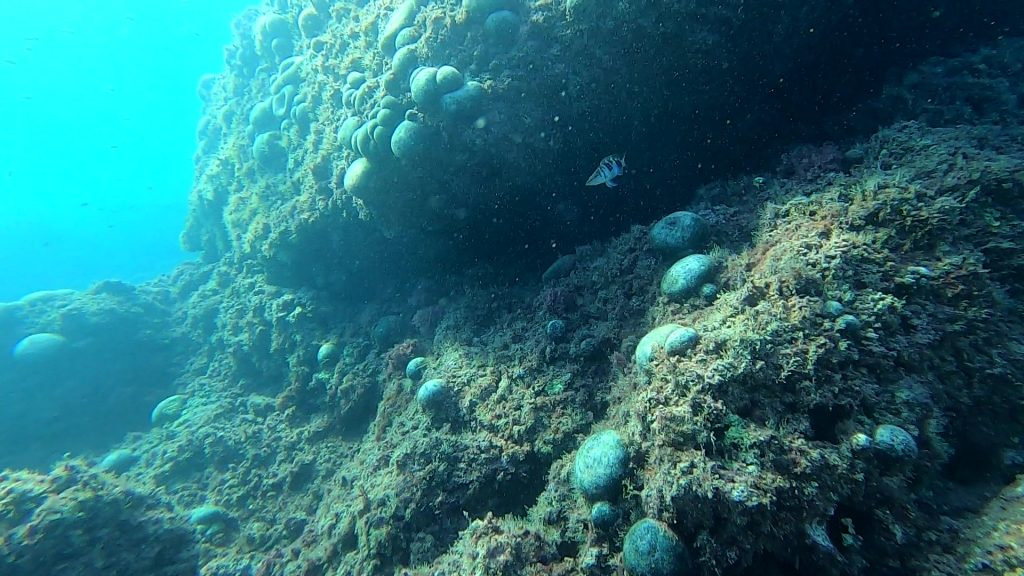
Codium Bursa Green marine algae Alga Palla intotheblue
Green ball (Codium bursa Agardh, 1817) is a round-shaped alga that is often found in the Mediterranean Sea.
Morphology
As a young man with a spherical shape, gradually more and more depressed in the center and flattened. It also reaches considerable dimensions, of about 40 centimeters in diameter. Rough to the touch, hollow inside and easily compressible. Green color, both light and dark. It can be confused with a sponge due to the texture.
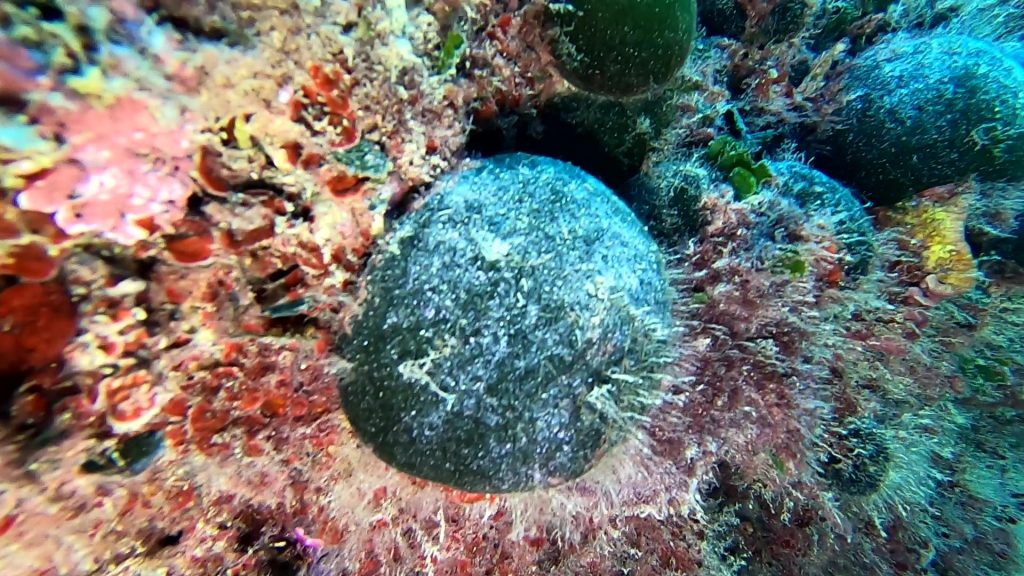
Distribution
It is frequently found in the Mediterranean Sea, up to 50 meters deep, on a rocky bottom or accompanied by Posidonia oceanica.
https://it.wikipedia.org/wiki/Codium_bursa
https://en.wikipedia.org/wiki/Codium_bursa
Probably the proliferation of this alga in this period falls within its normal life cycle and we are not faced with any particular phenomenon but we want to reflect on a phenomenon that is now more and more frequent every year, that is the lowering and sometimes the disappearance of the thermocline.

In winter, the life of most marine organisms in the Mediterranean Sea slows down, for example some fish species reach greater depths and then reappear in spring. The cause of this phenomenon is certainly the normal life cycle and the metabolism of some species that adapt to colder water temperatures following what biologists call thermocline and we take the opportunity to investigate this important phenomenon for the marine life of the Mediterranean.
The thermocline in the Mediterranean Sea is a natural phenomenon that regulates the biology and behavior of many marine organisms. In the Mediterranean Sea, surface waters can exceed 28 ° C in temperature during the summer. The surface waters float on the deep ones, which, maintaining an average temperature around 13 ° C for the whole year (it never drops below 10 ° C), have a higher density than the warmer superficial ones. In practice, a thermocline is already formed between 15 and 40 m, which creates a net barrier, due to the temperature difference between the two layers of water, which prevents the passage of nutrients of deep origins to the surface, also resulting in an insuperable obstacle for many animal species.
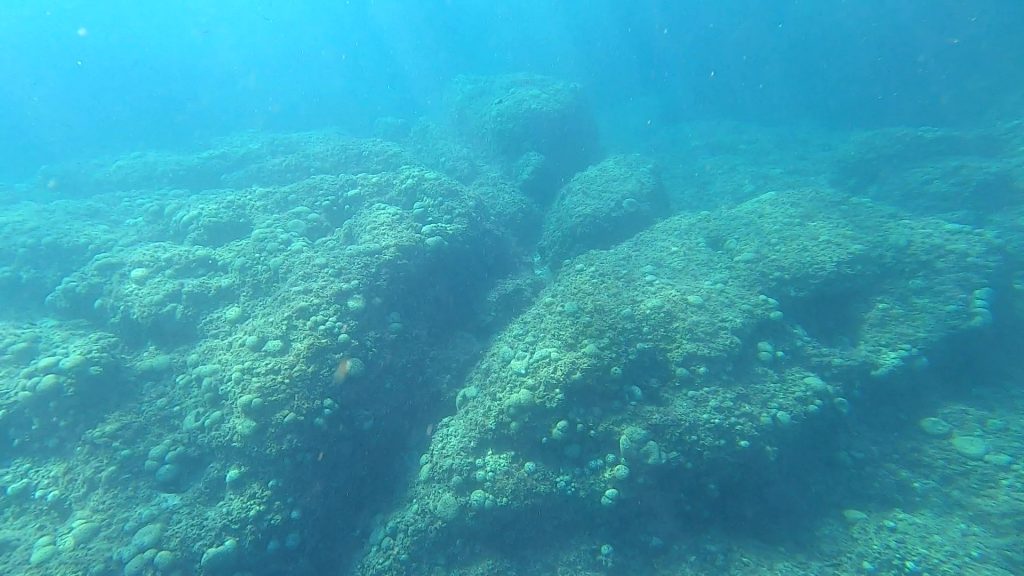
In winter, the density of the surface water increases due to the cooling generated by the lowering of the air temperature and to the cold and dry winds that blow from the north and north-west, which cause a considerable loss of heat and evaporation of the surface layers, and can bring the water temperature to values up to 9 ° C.
When the density of the superficial layers exceeds that of the deep layers, whose temperature is constantly around 13 ° C, these, rich in oxygen but poor in nutrition, collapse creating a homogenization and mixing with the deep ones, poor in oxygen but rich in nutrients.
In Mediterranean Sea there are two thermoclines, one in the summer season, which is established between 15 and 40 m, and the other in winter, which is deeper, at a depth varying between 150 and 400 m.
https://it.wikipedia.org/wiki/Termoclino
https://en.wikipedia.org/wiki/Thermocline
For several years, however, this normal mechanism has changed, in December the water temperature in the first meters of depth should begin to cool down to 8 ° / 9 ° / 10 ° and temperatures of 15 ° / 16 ° in the first 15 meters of depth prevent to the thermocline to manifest itself, or rather with the warming of the sea, the thermocline is always deeper and shorter in time, thus creating a barrier and an obstacle to the mixing of nutrients, oxygen and planktonic life that feed the normal life cycle of the Sea Mediterranean and seas and oceans around the planet.

